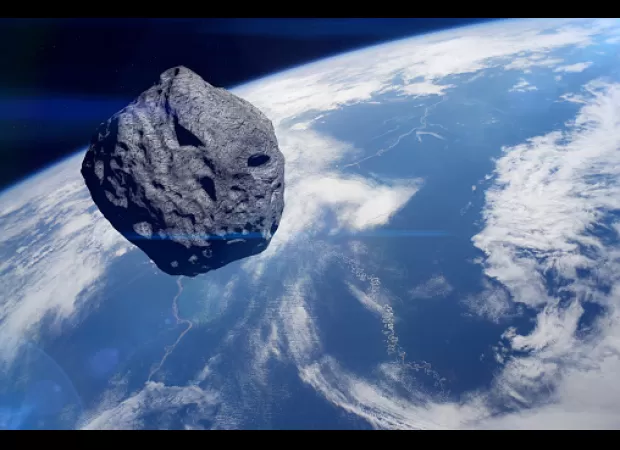Today, an asteroid known as a 'city killer' is passing close to Earth. Find out how to watch it.
Focus on the screen instead of looking up.

Today, an asteroid the size of a football pitch is making its closest approach to Earth in hundreds of years. Officially known as 2008 OS7, this massive space rock is approximately 270 meters in diameter and will zoom by at a staggering speed of 41,000 miles per hour.
Due to its impressive size and speed, it has earned the nickname "city killer," meaning that if it were to strike our planet, it could cause significant damage to a major city like London or New York. However, there's no need to panic just yet. 2008 OS7 is still a safe distance away at 1.77 million miles, so there's no immediate threat.
Although it won't be visible to the naked eye, there's still a chance to witness this once-in-a-lifetime event. Thanks to The Virtual Telescope Project, you can watch the asteroid pass by from the comfort of your own home at 6pm tonight. This is a rare opportunity as the asteroid won't come this close to Earth again for another couple of hundred years.
First discovered in 2008 (hence the name), this asteroid has an elliptical orbit, meaning its distance from Earth varies each time it completes its orbit, which takes 962 days. This makes it a "potentially hazardous" asteroid, as it meets the criteria of being at least 140 meters in diameter and orbiting within 4.65 million miles of Earth.
Speaking of near-Earth objects, NASA has identified around 34,000 of them, but they suspect there are many more out there. In fact, the European Space Agency estimates that there could be up to a million asteroids between 30-100 meters in size that have yet to be discovered.
In recent years, there have been some close calls with asteroids, including one that was only spotted 10 days before it passed by Earth at a dangerously close distance. This highlights the importance of continued asteroid detection efforts. Last week, an asteroid the size of a tennis court entered Earth's atmosphere over Berlin, with only three hours of warning. Fortunately, it was only a meter wide, and NASA considers it a success that they were able to detect it at all.
In more positive news, NASA has successfully deployed its Double Asteroid Redirection Test, a system designed to deflect asteroids and protect our planet. And if you're wondering about the fate of the dinosaurs, it turns out they were already struggling before the asteroid impact, according to scientists. And in a major milestone, NASA has finally managed to collect a sample from a billion-dollar asteroid.






